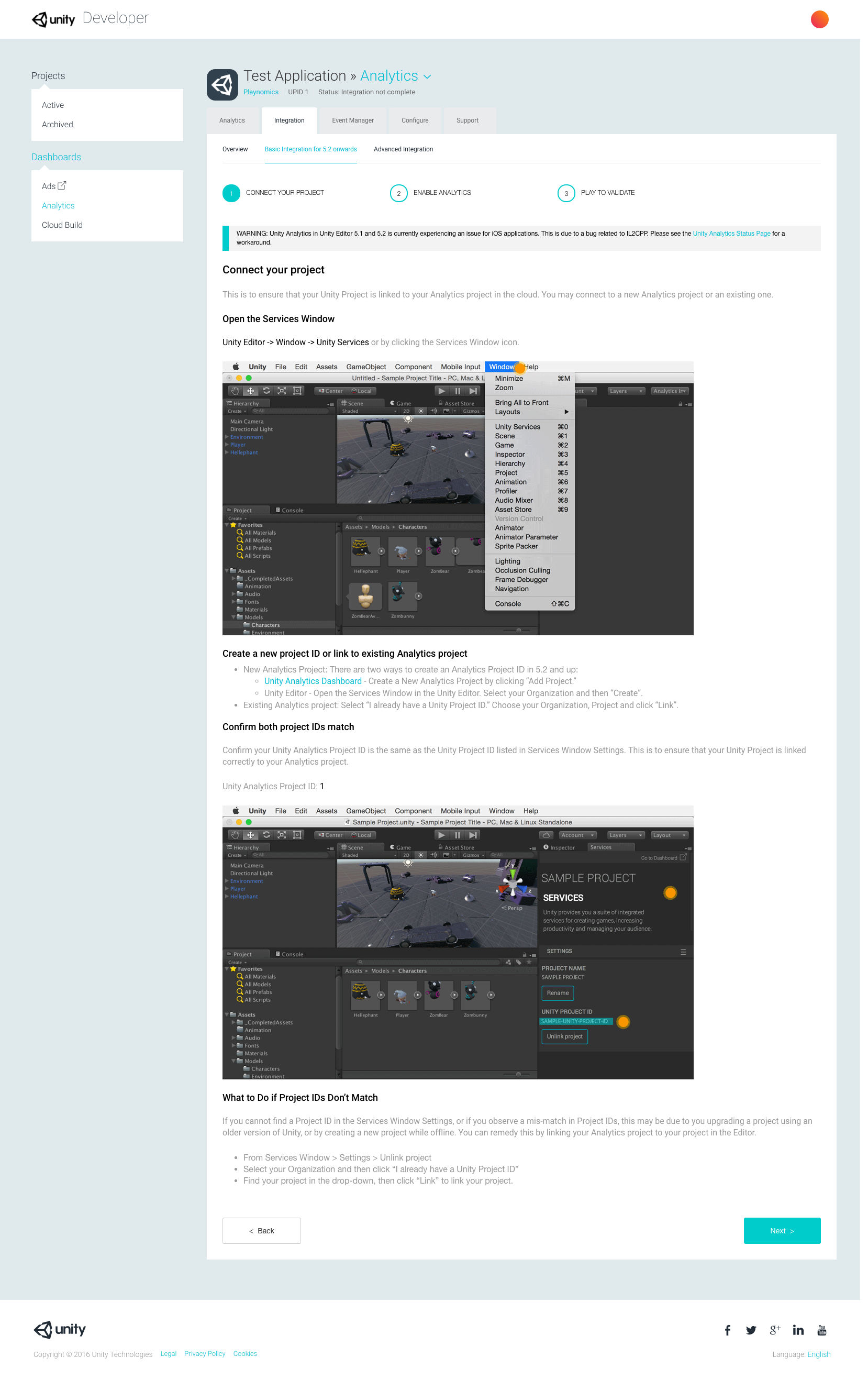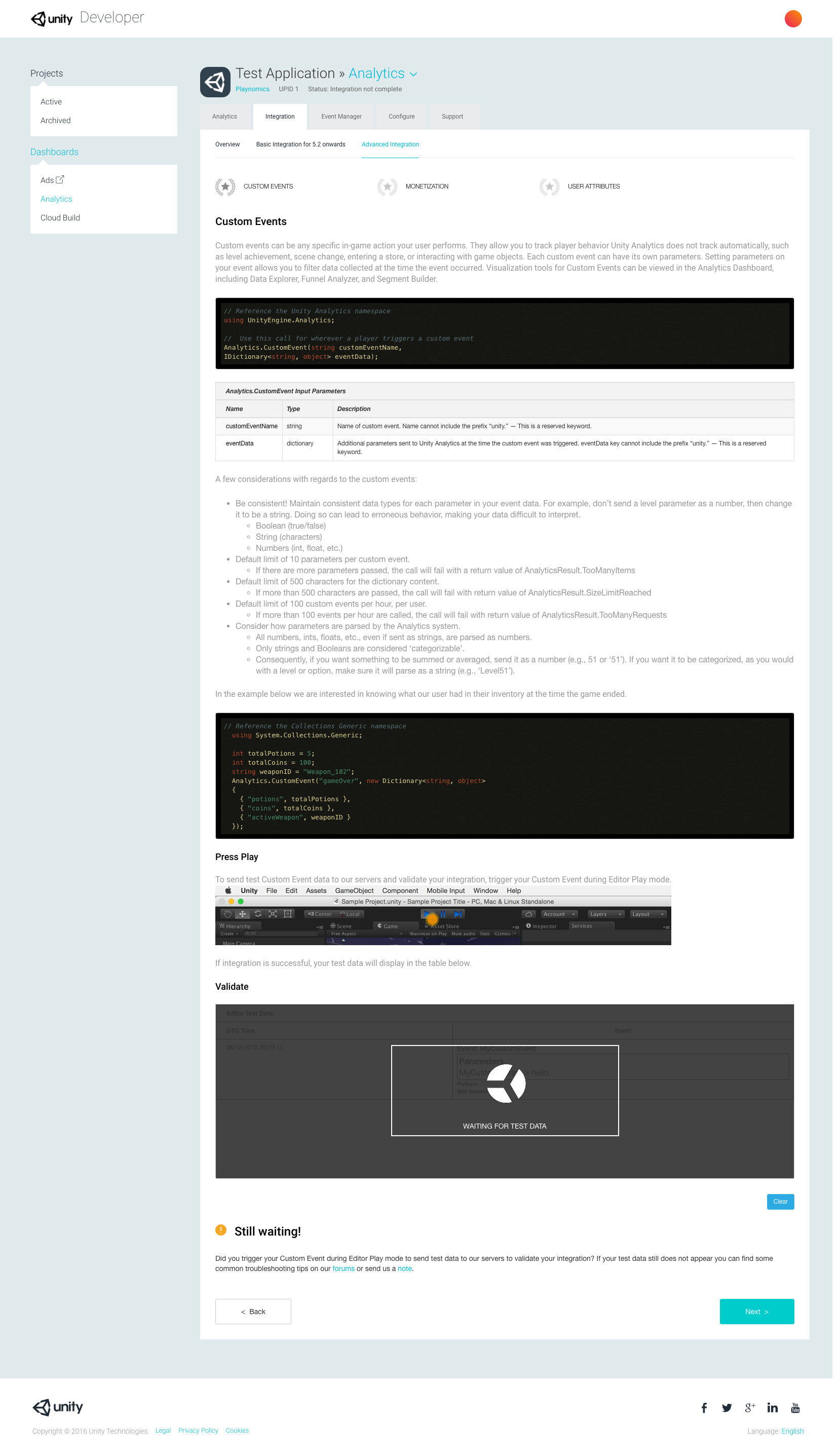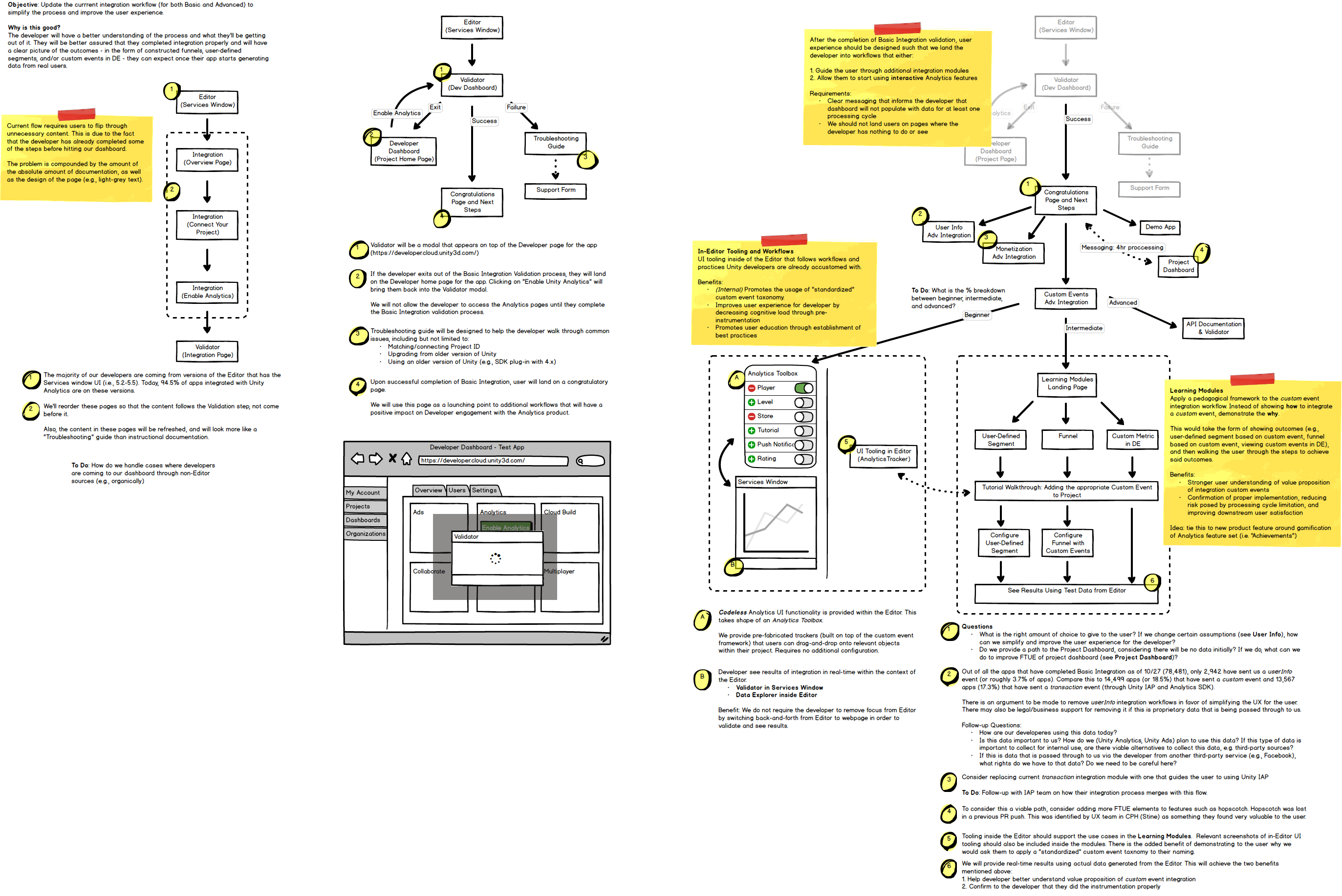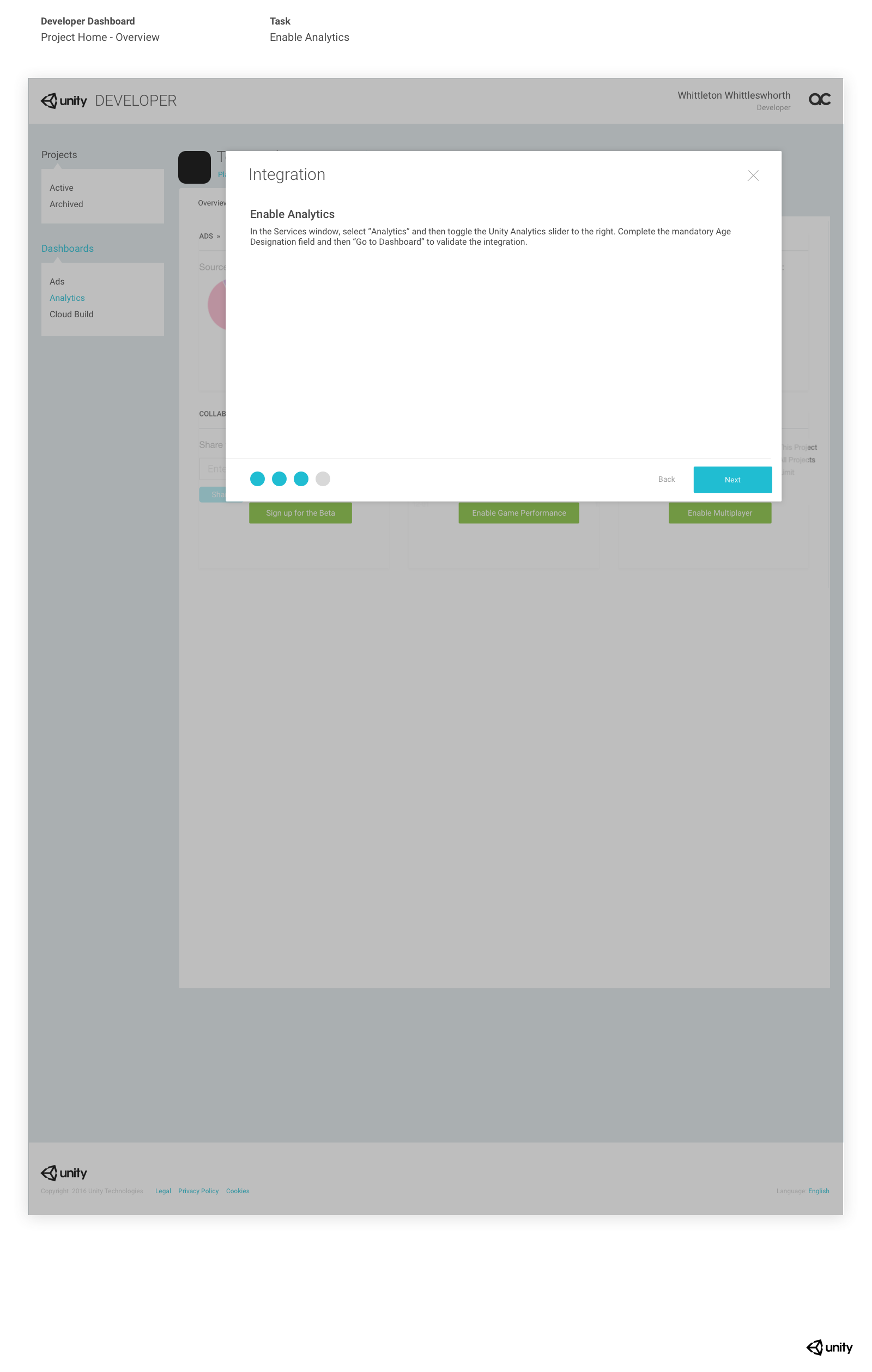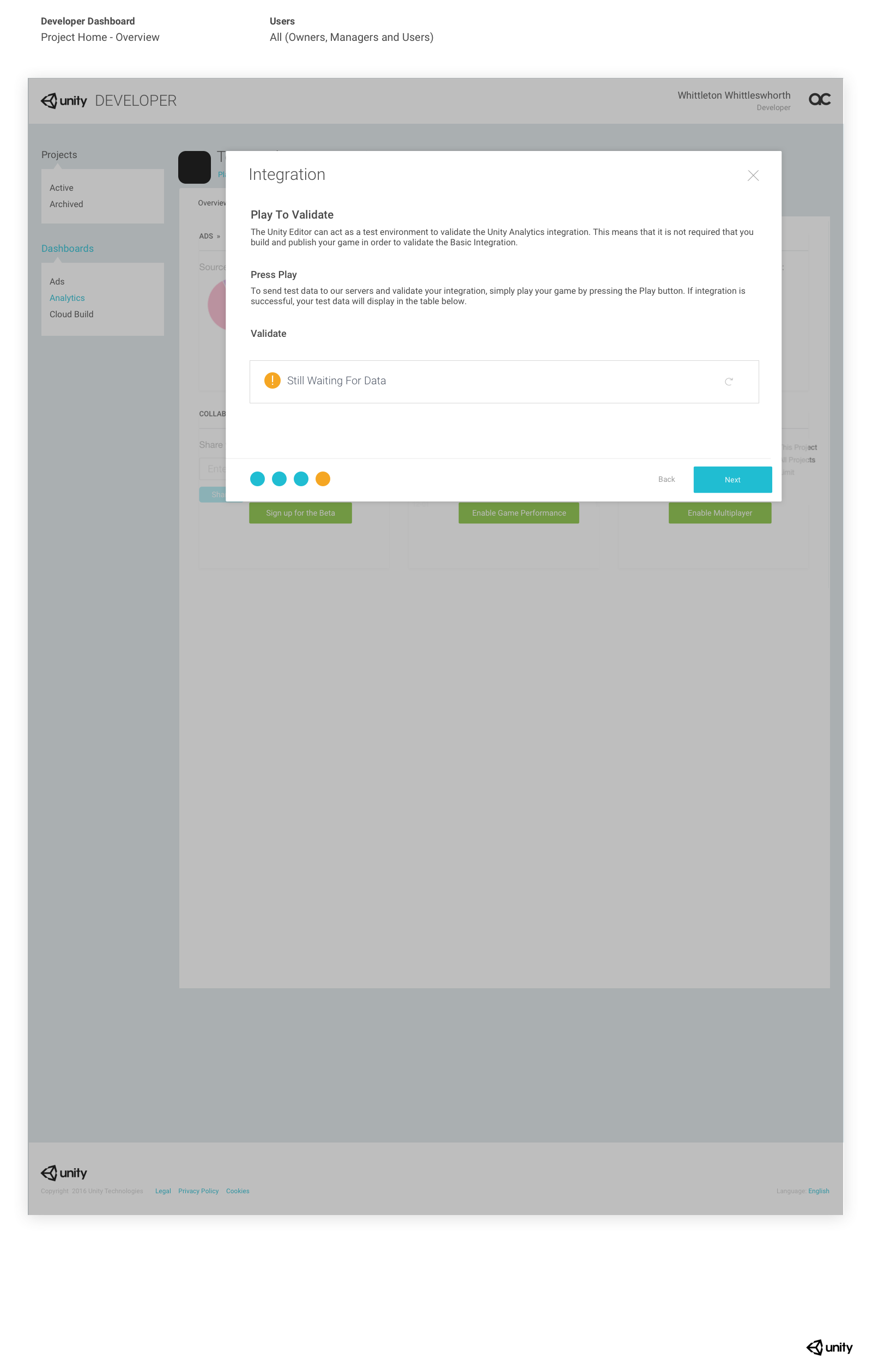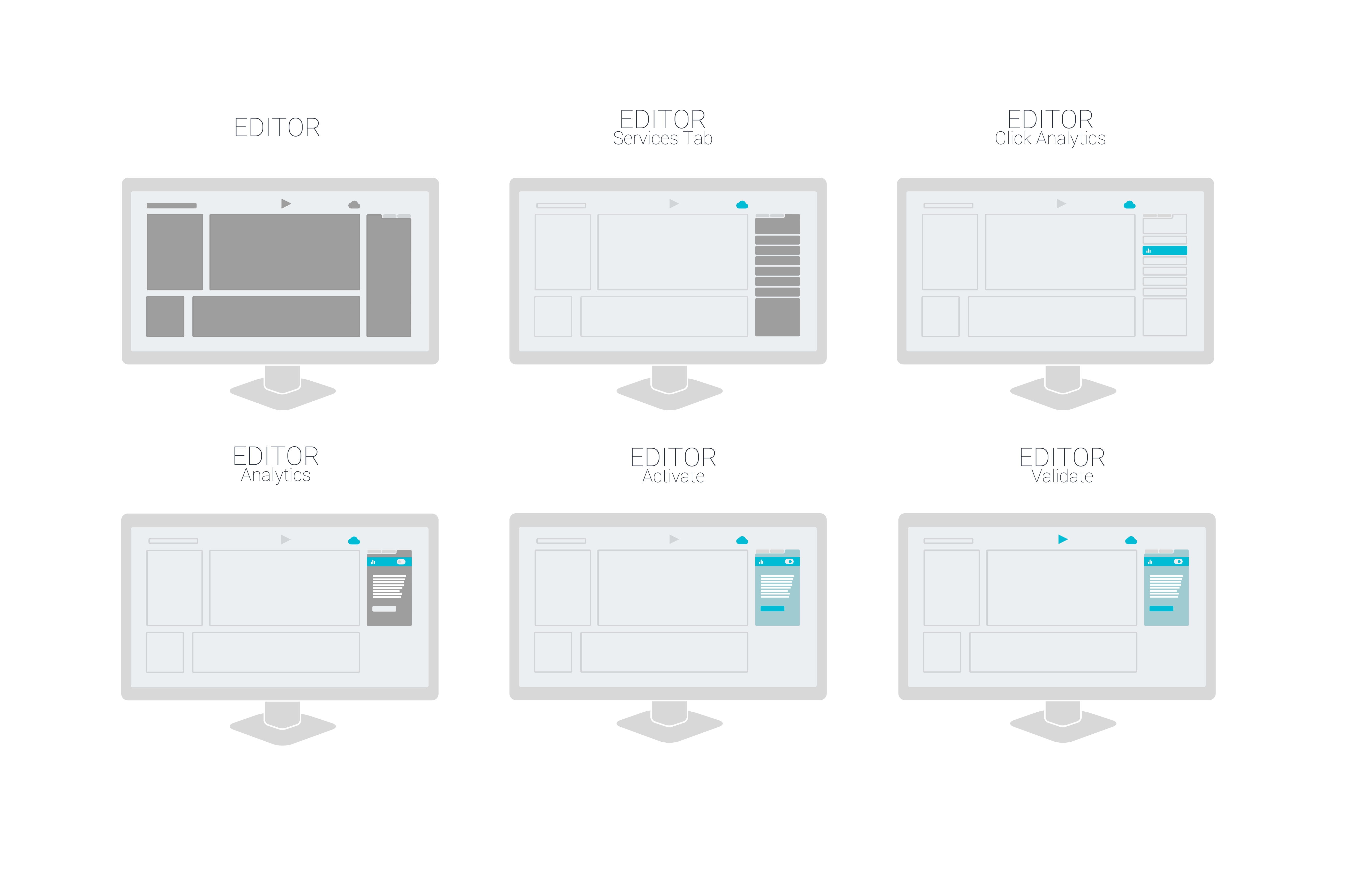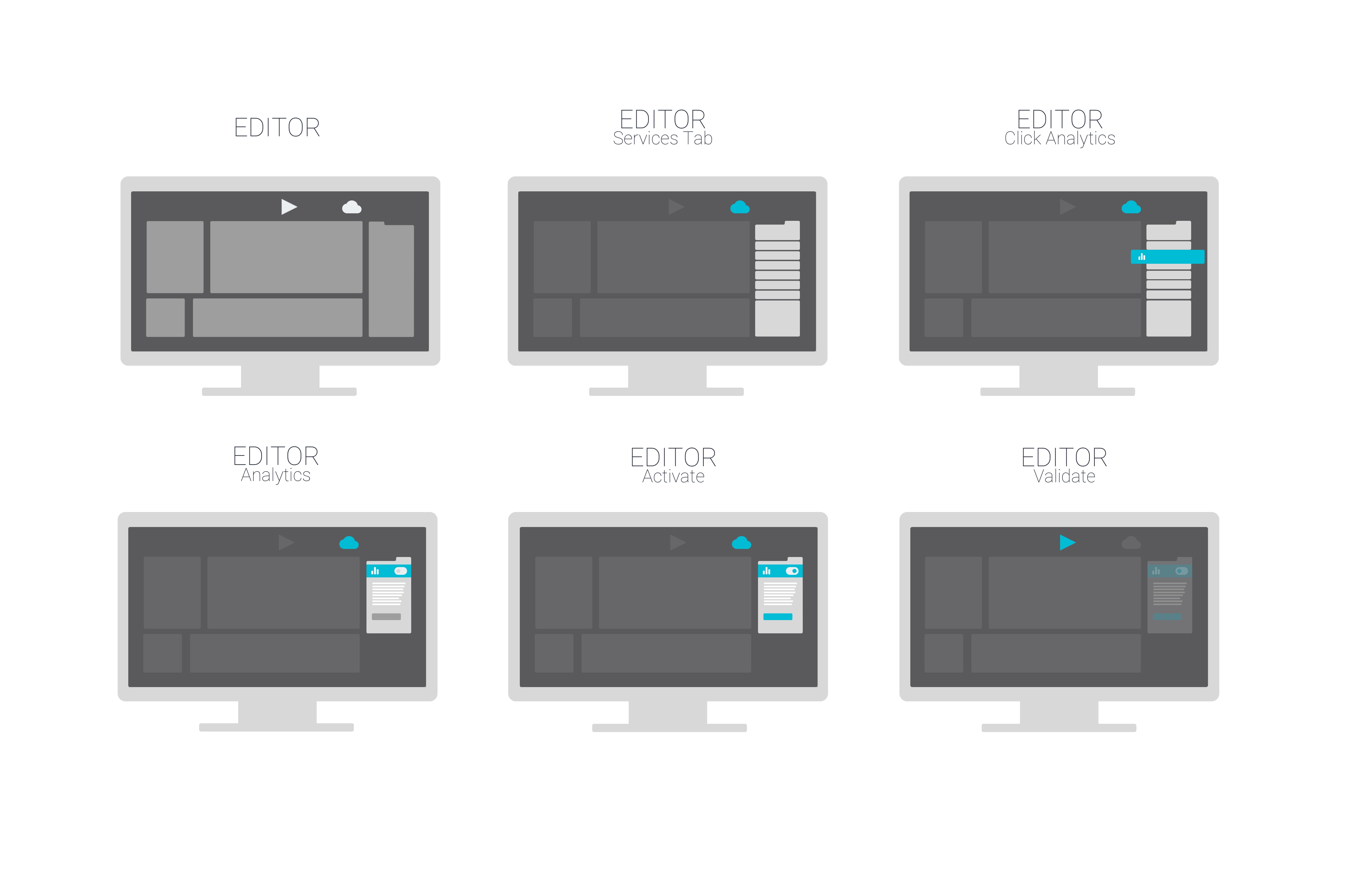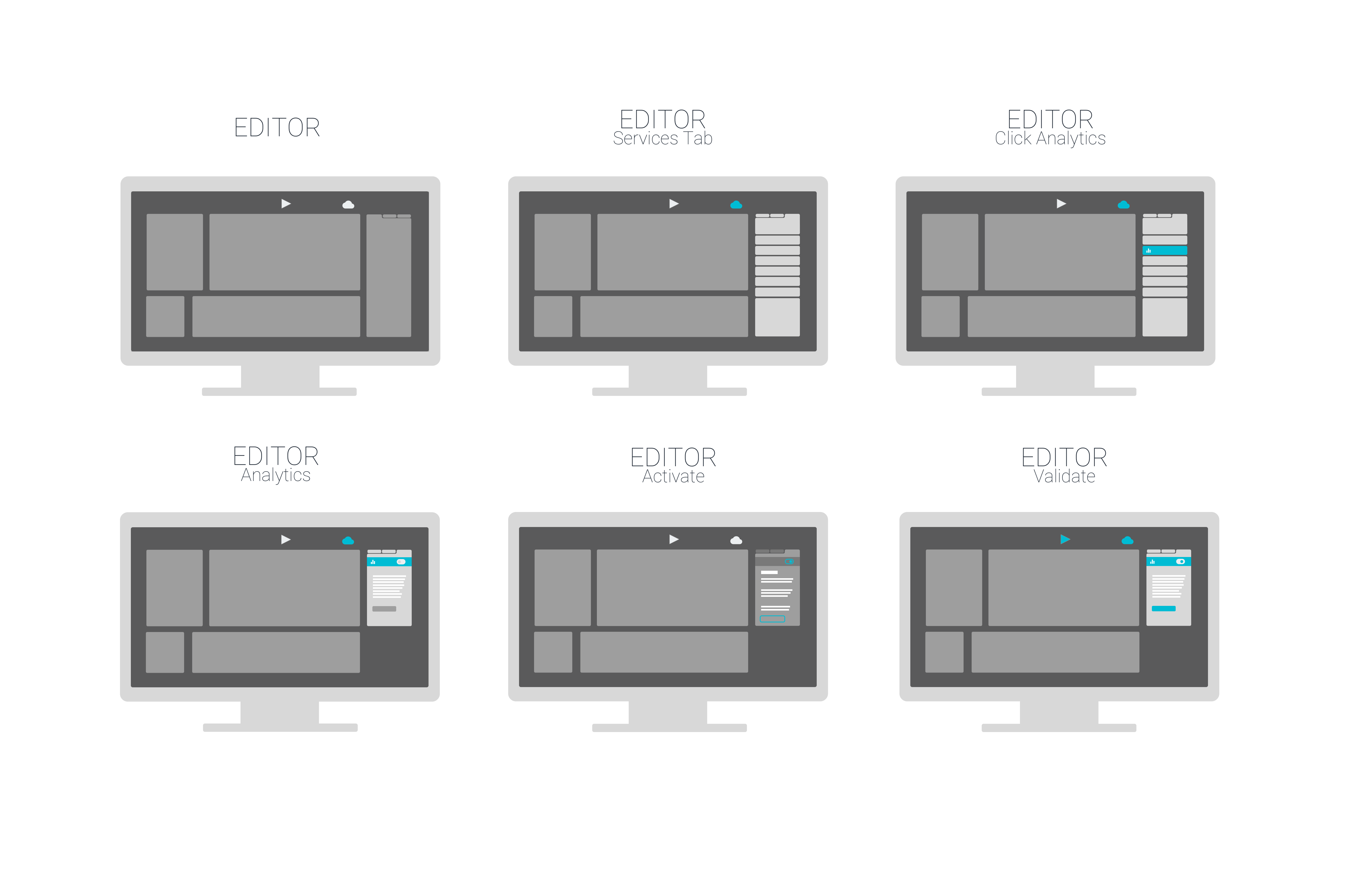Old Manual Flow
Problem
Analytics integration task success was at 5% of all users that turned on analytics in their project. The process was mandatory and required the user, a developer, to manually add code events to their project and then switch on analytics in their client. They were then sent on a series of steps to the online analytics site and back to the client again in order to validate the added events so that the proper data was collected successfully.
This experience led to low rates of adoption and DAU while also increased frustration from our users.
Hypothesis
Providing role relevant features concurrently on the client and the web to satisfy each user’s use case without having to leave their preferred workspace so that each role can integrate analytics effortlessly.
Method
Cognitive and user acceptance evaluations took place via moderated on-site and remote interviews using click through and mockups with over a dozen candidates.
Result and Next Steps
Two flows for each of the personas in this scenario was given the ability to add standard events automatically that they could then validate via the web or client without having to switch back and forth.
Iteration 1
Legacy Versions
New Versions
Integration Flows for legacy versions
Created 2 flows for legacy compatibility requirements. Automating some of the manual tasks would allow us to combine the flows to simplify the experience.
Hypothesis
If we automate the manual tasks, then the user would be able to complete integration effortlessly.
Method
GV’s Heart framework and job stories are used to determine the signals and metrics needed for for evaluating hypotheses and exiting sprints by addressing goals in a quantitative manner with cognitive walk-throughs and click through prototypes.
Result and Next Steps
Create a more streamlined flow where the user no longer performs any manual functions that could otherwise be done by the system.
Iteration 2
Streamlined Flow
Consolidated the legacy flows into one cohesive experiencewhere the user is stepped through the integration process.
Hypothesis
The streamlined flow will increase adoption and task success by decreasing effort and confusion for each of the personas relying on this feature.
Methods
On site interviews and moderated remote sessions allowed us to assess our hypothesis through cognitive walk-through mockups and click through prototypes on a handful of candidates.
Results and Next Steps
Emulate the web experience on the desktop client panel to improve the developer experience.
Iteration 3
Client Flow
The new process in the client no longer required the developer to access the website in order to validate integration.
Hypothesis
By keeping the developer within the client, analytics integration can be completed effortlessly and in situ in a matter of a few minutes eliminating frustration and increasing retention an adoption.
Methods
On site interviews with game developers evaluated using cognitive walk-throughs provided verification and feedback to finalize the design for beta.
Results and Next Steps
Replicating our flow across the other services as a pattern ensured consistency across the product for like scenarios.


